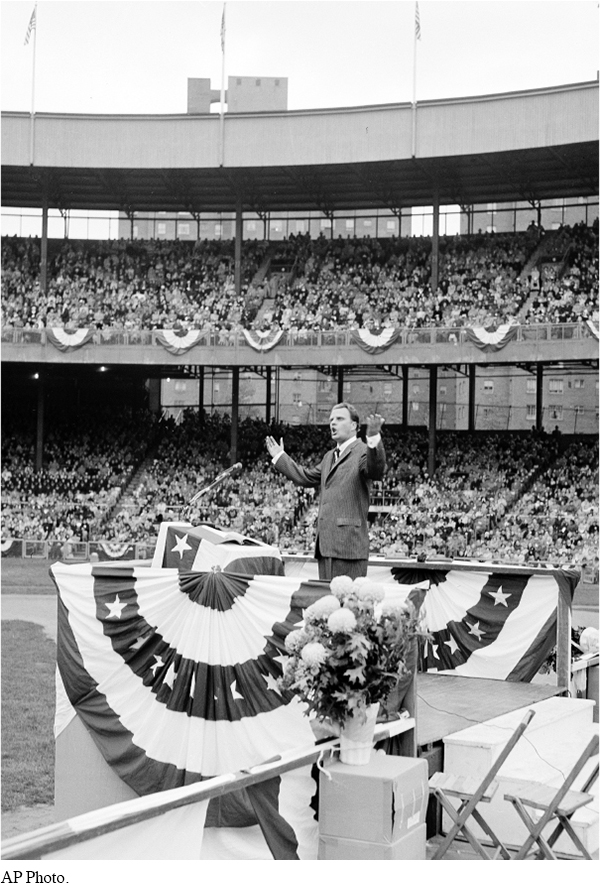The American Promise: Printed Page 790
The American Promise, Value Edition: Printed Page 716
The American Promise: A Concise History: Printed Page 816
The Revival of Domesticity and Religion
Despite married women’s growing employment, a dominant ideology celebrated traditional family life and conventional gender roles. Both popular culture and public figures defined the ideal family as a male breadwinner, a full-
The American Promise: Printed Page 790
The American Promise, Value Edition: Printed Page 716
The American Promise: A Concise History: Printed Page 816
Page 791Although the glorification of domesticity clashed with women’s increasing employment, many Americans’ lives did embody the family ideal. Postwar prosperity enabled people to marry earlier and to have more children. In the midst of a general downward trend over the century, the American birthrate soared between 1945 and 1965, peaking in 1957 with 4.3 million births and producing the baby boom generation. Experts like Dr. Benjamin Spock encouraged mothers to devote even more attention to child rearing, while they also urged fathers to cultivate family “togetherness” by spending more time with their children.
Interest in religion also surged in the 1950s. From 1940 to 1960, membership in churches and synagogues rose from 50 to 63 percent of all Americans. Polls reported that 95 percent of the population believed in God. Evangelism took on new life, most notably in the nationwide crusades of Baptist minister Billy Graham. Congress linked religion more closely to the state by adding “under God” to the pledge of allegiance and by requiring that “In God We Trust” be printed on all currency.

The American Promise: Printed Page 790
The American Promise, Value Edition: Printed Page 716
The American Promise: A Concise History: Printed Page 816
Page 792Religion helped to calm anxieties in the nuclear age, while ministers such as Graham made the Cold War a holy war, labeling communism “a great sinister anti-